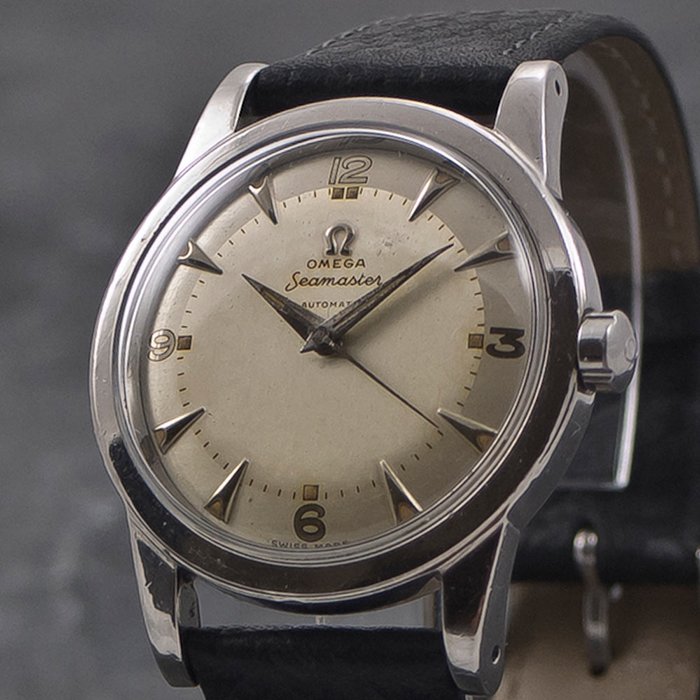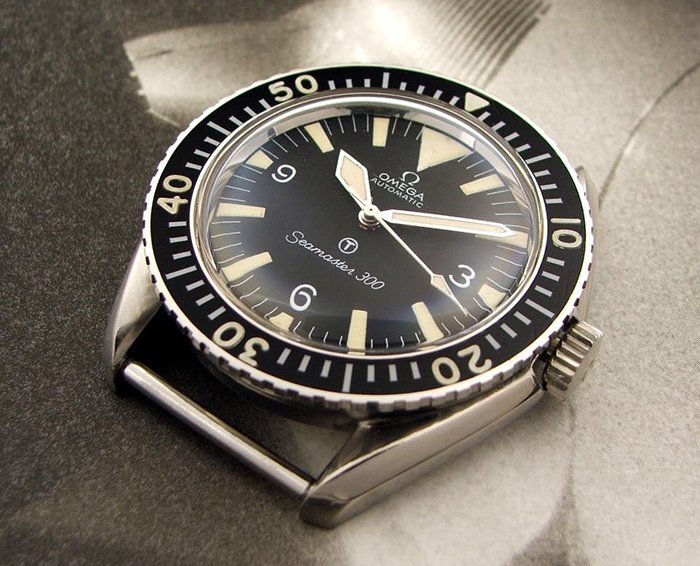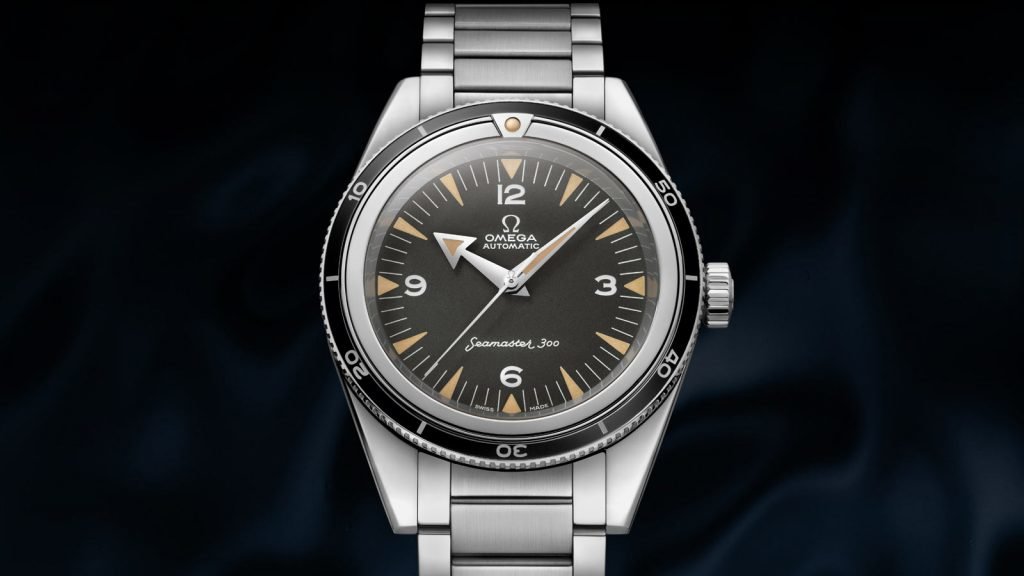The Complete History of the Omega Seamaster
The Omega Seamaster may be most quickly recognized as the “James Bond watch,” but the watch’s history dates back to 1948 when it debuted in celebration of Omega’s 100th anniversary. The model was an immediate hit and became the brand’s best seller. Today it remains the oldest model in Omega’s current collection. We look back at the long history of this fan-favorite Omega watch.

Omega Seamaster’s Original Design
Jumping back a little bit: in 1932, Omega debuted its Marine watch which was worn by the “father of modern diving” Yves Le Prieur, a French navy officer and inventor of the modern scuba mask and tank. Later, in 1936, explorer Charles William Beebe wore the Omega Marine watch while riding in a bathysphere (which was an unpowered sea submersible that was lowered into the ocean via a cable) to a depth of 14 meters off the coast of Bermuda. So by 1948, Omega was a brand well-respected for its robust divers’ watches, and it further bolstered that reputation with the introduction of the Omega Seamaster.
The first Omega Seamaster was modeled after the waterproof wristwatches made for and worn by the British military during World War II. What distinguished the Seamaster from its diving watch predecessors was its O-ring gasket which improved its water-resistance. Previously water-resistant watches relied on lead or shellac gaskets which were easily affected by temperature changes like those a diver would experience at various depths. Omega turned to the submarines used during WWII for inspiration and included a resilient rubber gasket in the Seamaster’s final design. This new case remained intact at depths up to 60 meters and temperature ranges between -40 degrees and 50 degrees Celsius.
Omega engineers was so confident of the Seamaster’s durability, they attached one to the outside of an aircraft and flew it over the North Pole in 1956.

The Seamaster 300
In 1957, when scuba diving was the en vogue sport, Omega rolled out a trio of Master watches: the Speedmaster, the Railmaster and the Seamaster 300. Unlike its predecessor, the Seamaster 300 was designed for underwater use. Ironically, however, the Seamaster 300 could only dive to depths of 200 meters which Omega claimed was due to equipment limitations, not the watch’s limitations.
And continuing the tradition of Omega as the go-to watch for divers, famed oceanographer Jacques Cousteau’s team wore Omega Seamaster 300 watches during their 1963 Conshelf II experiments in the Red Sea. Over the span of three increasingly longer dives, Cousteau aimed to prove man could live and work on the sea floor.
James Bond’s Watch
By the mid-1990s, Omega Seamaster had fallen slightly out of popularity, giving way to new iterations like the Omega Seamaster Professional, a new fan-favorite. However the Omega Seamaster 300 received a major boon when it was selected as the James Bond watch. Although James Bond’s author Ian Flemming included a Rolex watch in his novel and even wore a Rolex himself, Omega pushed Rolex out of the film as the costume designer noted Omega was more historically relevant to the British Royal Navy and, in turn, the James Bond character.
Therefore, Pierce Brosnan’s James Bond wore an Omega Quartz Seamaster Professional 300 in the film Golden Eye in 1995. For the next three Bond films, Brosnan sported the Omega Seamaster 300 Automatic Chronometer in Tomorrow Never Dies (1997), The World is Not Enough (1999) and Die Another Day (2002).

When actor Daniel Craig was cast as the next James Bond for 2006’s Casino Royale, he wore an Omega Seamaster 300 and Omega Seamaster Planet Ocean with a rubber strap for the action scenes. Craig donned a Seamaster Planet Ocean again for Quantum of Solace (2008) and a Seamaster for Skyfall (2012). In celebration of the 24th Bond film, Spectre (2015), and a 20 year-long partnership with the Bond franchise, Omega released the special edition Seamaster 300 Spectre which harkened back to the original Bond Seamaster.
The 2012 London Olympics
In 1948, the same year as the Omega Seamaster’s debut, Omega was the official time keeper for the London Olympic Games. When the Olympics returned to London in 2012, Omega released a special edition Omega Seamaster 1948 Co-Axial London 2012. Only 1,948 watches were produced. While the dial looks like a classic Seamaster, the back of the case is yellow gold, stamped with the jaggedly-shaped London Olympics 2012 logo.
The Omega Seamaster 300 60th Anniversary Limited Edition
At Basel in 2017, Omega debuted their 60th Anniversary Limited Edition Omega Seamaster which pays homage to the original Seamaster (Ref. CK2913) which was released in 1957. This commemorative Seamaster looks nearly identical to the original with nearly indiscernible updates to the material: markers made in SuperLuminova instead of radium and durable aluminum for the bi-directional bezel in lieu of acrylic. Internally the automatic watch relies on the advanced caliber 8806 whereas the original used caliber 501. And with a keen attention to detail, Omega gave the dial a faux-tropical finish for a rich vintage look.

With a rich history and sleek design, it’s easy to see why the Omega Seamaster continues to be a fan-favorite and holds its position as the oldest model in the brand’s current collection.
Photo Credit: wristchronology.com / scubawatch.org / bestmangear.com








